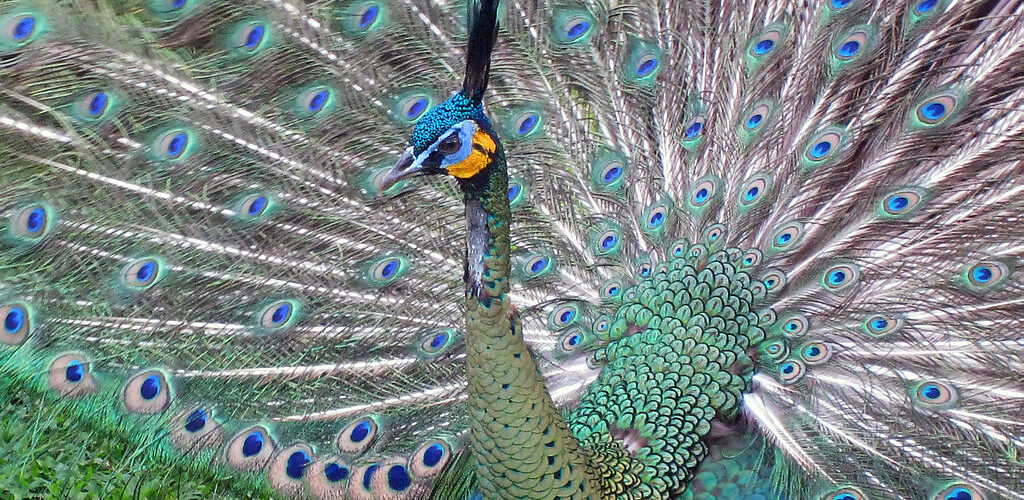Disease Inheritance Odds Now Calculable

Since the discovery of evolution and genetic inheritance it has become a well-established fact that animals are drawn to mate with members of the opposite sex possessing appealing characteristics. Colourful male peacock feathers are perhaps the most widely known example of selection of physical attributes in the animal kingdom for the chance to reproduce. The reason for this is to pass on traits useful to the survival of offspring as well as increasing the chances of the continuation of the animal’s lineage. The inheritance of a particular trait displayed by either parent is by no means ensured. At conception each parent contributes half their DNA (a mix from their parents which is a mix of their parents’ DNA and so forth), however, the information programmed into each inherited gene is not expressed equally in the offspring – a phenomenon caused by the presence of dominant and recessive genes. Therefore, the combination of genes the offspring receives can result in physical characteristics which differ from the trait of the parent. Among a species there are differences in phenotype known as alleles which come from varied genetic sequences called single nucleotide polymorphisms (SNPs). However, what if it were possible to know the odds of a child inheriting a particular trait before conception?
The genetic analysis carried out towards finding a link between traits of interest and SNPs associated with said trait have advanced in the past decade 1. The experimental technique involves the use of microarrays, each containing tens of thousands of microscopic beads, which bind short DNA sequences and are complementary to the gene(s) containing a SNP which confers the trait of interest [lref id=2]. Microarrays allow for whole genome genotyping (WGGT) that focuses on finding a link between a distinct SNP and a specific trait among the genome (all an organism’s genetic material). DNA is fragmented and added to the microarray, where only the fragments which bind strongly to complementary sequences stay while the rest are removed. Upon binding of these DNA sequences, the different binding DNA are labelled by different nucleotides specific to a phenotype, which allows for linking SNPs to phenotypes 2. By comparing the microarray data between a large group of subjects, possessing the trait, and comparing it to a control group (i.e. those without the trait), the data reveals SNPs which are largely common to only those with the trait of interest.
Due to the recent advances of genetic analysis and the ease with which a human genome can be sequenced, the alternate future seen in Gattaca may in fact become a reality. An American company, 23andme, has developed the means to test a person’s DNA and determine the likelihood of their children inheriting specific physical traits (or phenotypes). The 23andme website lists a range of diseases, which can be tested for, which include cancer, degenerative diseases – such as Alzheimer’s & Parkinson’s – heart disease and diabetes. In addition to testing for serious diseases, the company also analyses DNA in order to calculate the odds of passing on the genes for physical traits, such as attached earlobes, dexterity and eye colour; as well as other phenotypes, which are known to be heritable characteristics.
23andme use a software called the Family Traits Inheritance Calculator, which does what it says on the tin – analysing a person’s DNA for SNPs, known to be associated with specific traits, and whether the allele is dominant or recessive. From there, the likelihood of these genes causing someone’s children to have phenotypes of interest can be determined as the provider of half a child’s DNA. The analysis done in the laboratories of 23andme shows how research into the genetic roots of diseases has advanced with increased understanding of genes and inheritance. This knowledge may improve further still with whole genome genotyping providing a means of more in-depth study of alleles linked to physical traits.
It is not news that there are diseases, which are hereditary, such as Parkinson’s disease and certain cancers, and this list can be added to by identifying SNPs, which contribute to having a disease. A person can then be tested for this mutation and the chances of children getting the disease can be calculated, diseases will occur due to multiple genetic mutations acting synergistically. Possessing a means of testing for SNPs responsible means having the ability to prepare for, and adapt to, diseases. This can be done by dietary control for diabetes and the foresight to test for cancer and so allow treatment and management of the condition before it develops to life-threatening. Listed among the diseases with identified SNPs are cystic fibrosis, sickle cell anaemia and rheumatoid arthritis, but perhaps time will lead to the discovery of more diseases, which originate from genetic mutations, thus improving our understanding of many illnesses and perhaps even helping to develop cures.










